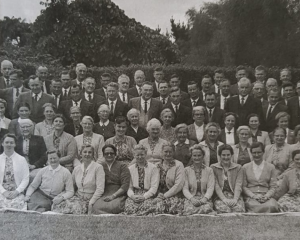Police are changing the way they record their statistics in a bid to "count the victims behind the crimes".
Recorded Crime Victim Statistics were launched this morning and for the first time, include the age, gender and ethnicity of victims, and the relationship between victim and offender.
It is hoped that in future the time, scene and geographical location of "victimisations" will also be provided.
Police say the RCVS will provide "far better more detailed information about victims".
"The RCVS will count how many times police receive reports of crimes that have a victim. These statistics will provide new information about victims and a more complete picture of who is affected by crime in New Zealand," the media briefing information said.
"The RCVS makes use of better technology for recording and reporting information about victims. This means a new level of information will be publicly available and will give everyone a better picture of crime and the harm it is causing communities. They tell us which sections of the community are experiencing the most victimisation and will help police prioritise staff and resources."
A second set of new data, Recorded Crime Offender Statistics, is due for release in 2015, and will reveal details about who is committing crime.
The new data will eventually replace the current model which focuses on total crime. It will not be comparable with current stats, which focus on total crime rather than victims and offenders.
Police will continue to record those figures which focus on total crime, however they will not be published after the 2014 calendar year figures are release in April.
Superintendent Dave Trappitt was confident the information will give a comprehensive insight into crime in New Zealand and enable them to better reflect their victim-focussed mandate.
"It's quite a different way of looking at it," he told the Herald.
"What we're trying to do it produce a good quality social indicator that really reflects the experiences of our citizens."
The current stats are released twice a year, but that will not continue after April when the 2014 calendar year figures come out.
The first dump of new victim stats will happen at about 11am on Friday and will cover the period from July 1 to October 31 this year. From January they will be put out on the last working day of each month.
The new system would not be comparable to the old way of reporting crime stats, but police believed it would better enable them to focus more on victims and prevention.
They said the current stats inhibited accurate crime reporting as they gave no descriptions or context.
RCVS would be "more open and transparent" than the current model, and was in line with the way stats were reported in Australia and the United Kingdom.
Police said RCVS would give a "more comprehensive picture of the impact of crime".
Police national statistics manager Gavin Knight said the aim was to increase the amount of information available over time.
"What we're doing with these stats is much better than what we were doing before," he said.
"Alongside the stats, there will be a user manual which fully describes the data and how to use it."
The new-look police statistics can be viewed at the Statistics New Zealand website www.statistics.govt.nz.
****
Q&A - Recorded Crime Victims Statistics (RCVS)
What is included?
The new data-set shows reported victimisations. This is the number of reports received of crimes that have a victim, such as assault, burglary, theft.
What is not included?
Data about offenders and offences that do not have specifiable victims for example drugs and public disorder.
Will police still record information about offenders and "victimless" crimes?
Yes. Police will start to release Recorded Crime Offender Statistics in 2015 which will include this information.
What about the existing crime stats?
They will be recorded as normal alongside the new stats. However only RCVS and RCOS will be published.
Where can I find these statistics?
Statistics New Zealand have launched the information on their website www.statistics.govt.nz. The information is gathered by police but published by Statistics New Zealand.
By Anna Leask of the NZ Herald












